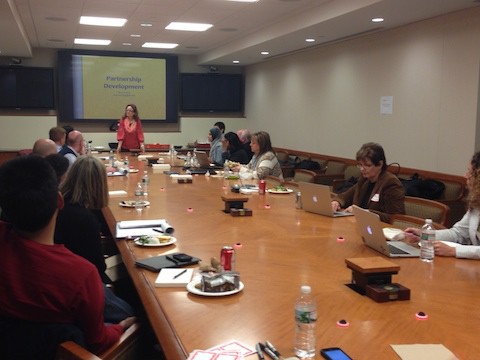Partnership Development: What You Need to Know

By: Marissa Lowman and Eileen Rudden
The key to partnership development is relationship building, especially in the edtech industry. Sharon Kan, an accomplished serial entrepreneur and executive who sold her edtech startup Tikatok to Barnes & Nobles a few years ago, taught the last class in our four class series on Sales for Edtech Startups last week. Tikatok is a web-based platform that enables children to publish their own writing.
Sharon has focused on partnership development in every position she has held, from VP Sales to CEO. She attributes her success to building strategic relationships and keeping them, even when it seems like they aren’t needed anymore.
Learn about Sharon’s tips for building and maintaining a successful partnership, as well as when you shouldn’t agree to a partnership.
Developing a Successful Partnership
1. Determine what you can offer a potential partner and what you need.
You have to define where you want your company to be in 3 years and what your company needs to be able to grow quickly. You might need to expand market reach, build an audience, or increase revenue. Once you have determined what your goal is, identify potential partners and figure out what you have to offer that your partner is missing. The first partnership Sharon developed for Tikatok was with the Boston Public Library. The library, which had 25 locations at the time, wanted to increase interest in literacy among elementary school children. The partnership allowed Tikatok to run workshops for kids, which enabled them to get to know the target market and build credibility. It also helped prove that kids love to learn from other kids and gave the company time to perfect its product.
2. Don’t give away exclusivity early on.
Every single partner Sharon has worked with over the years has asked for exclusivity. She offers ways to circumvent this without derailing discussions. You should make sure your potential partner understands that your company has to grow and increase value for its shareholders. You can show how committed you are to the partnership in other ways, such as giving the company excellent support and providing them with additional services. If a company is really concerned about you creating alliances with its competitors, Sharon suggests creating a list of companies that you agree not to approach during the first few months or year of the partnership. Alternatively, a promise not to share information with other partners might work.
3. You never know where an opportunity might lead.
In 2009, Sharon met with Barnes & Noble.com, which was building a digital publishing group at the time and needed a digital publishing platform for kids. Although she gave the wrong pitch based on her assumption they were interested in a partnership, they called her 30 minutes after the meeting and told her they wanted to acquire Tikatok.
When You Shouldn’t Partner
1. The right people aren’t sitting at the table.
Big companies like to learn, so it’s important to understand who is attending meetings and why. Sometimes potential partners meet with startups because they are doing market research, but not looking to buy anything. Sharon once met with a potential partner and showed the company her product. Even though the company had signed an NDA or non-disclosure agreement, the company went ahead and developed a competitive product.
Prior to a meeting, you should know whether your product aligns with a company’s strategy and what the company’s power structure is. If there are decision makers in the room, it is more likely the company is seriously considering a partnership.
2. If you don’t have a champion, you might not get the relevant information you need.
When Sharon was working at Barnes & Noble, she built a strong relationship with Pearson, which wanted to market Tikatok via their social studies group. Pearson knew Tikatok was actively pursuing teachers and schools, but the social studies group nevertheless took a risk and disclosed their sales strategy. By disclosing key information as well as their strategic direction, Pearson was able to gain Sharon’s trust, and ultimately, a partnership deal.
Building relationships with people at different levels of an organization is a good way to get information on where partnership discussions stand. Although they tend to give you different messages, it will help you gauge interest. You will need to have a champion at the organization who loves your product and is willing to risk their reputation because they believe in you. That will give both parties some skin in the game and make it more likely that discussions will move forward in a timely manner.
Partnerships can help your startup grow, but require a lot of effort to obtain and nurture.
This is the fourth in the series outlining what every EdTech entrepreneur needs to know. Be sure to read the other posts LearnLaunch’s Eileen Rudden and Marissa Lowman: Sales 101 for EdTech Entrepreneurs, 7 Tips for EdTech Enterprise Sales and The Truth about Inside Sales.
LearnLaunch, Boston’s edtech community, campus, and accelerator, is dedicated to connecting, educating, and growing the education technology ecosystem to drive innovation and transform learning. Marissa Lowman and Eileen Rudden are co-founders.






0 Comments
Leave a Comment
Your email address will not be published. All fields are required.